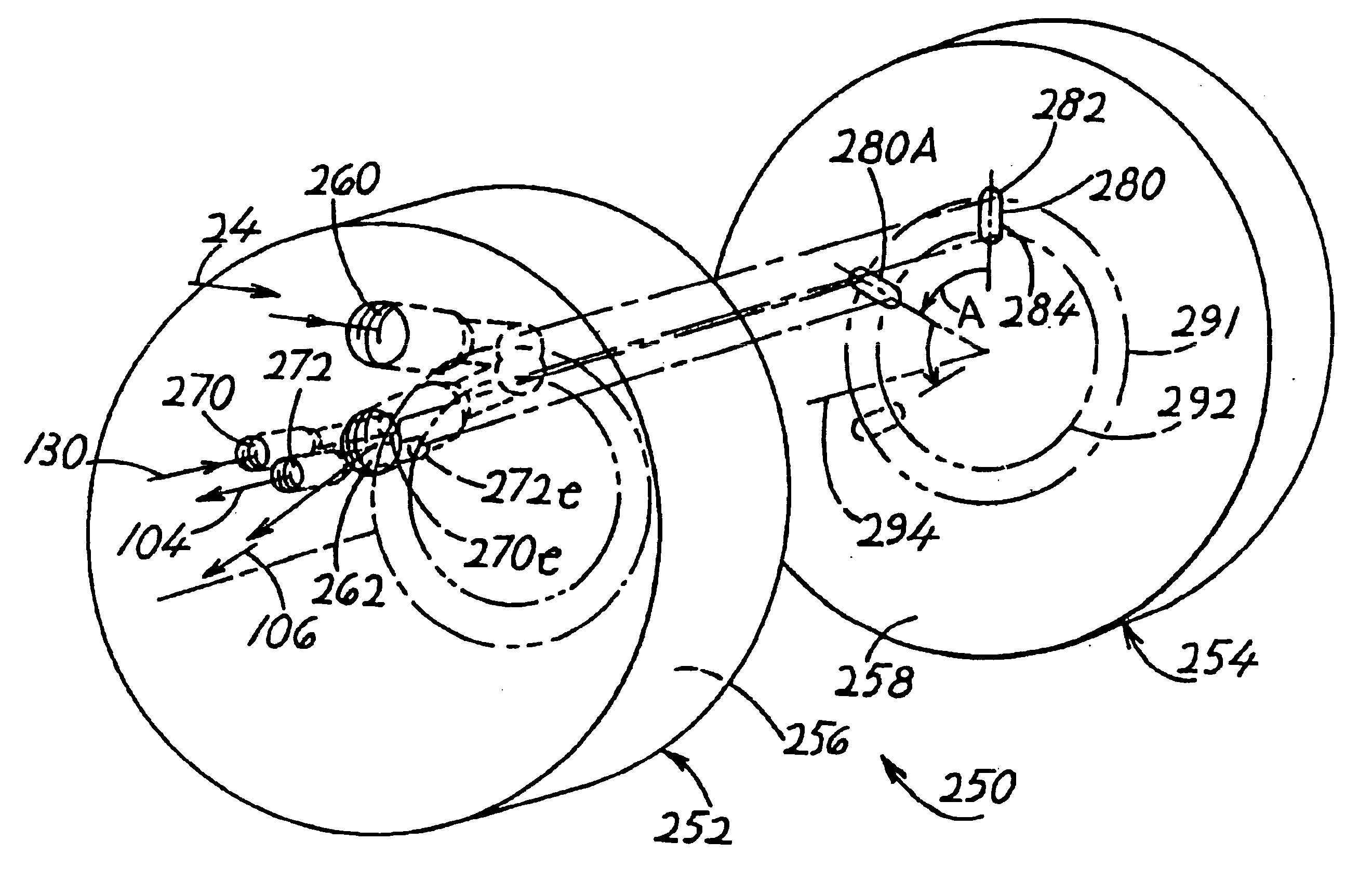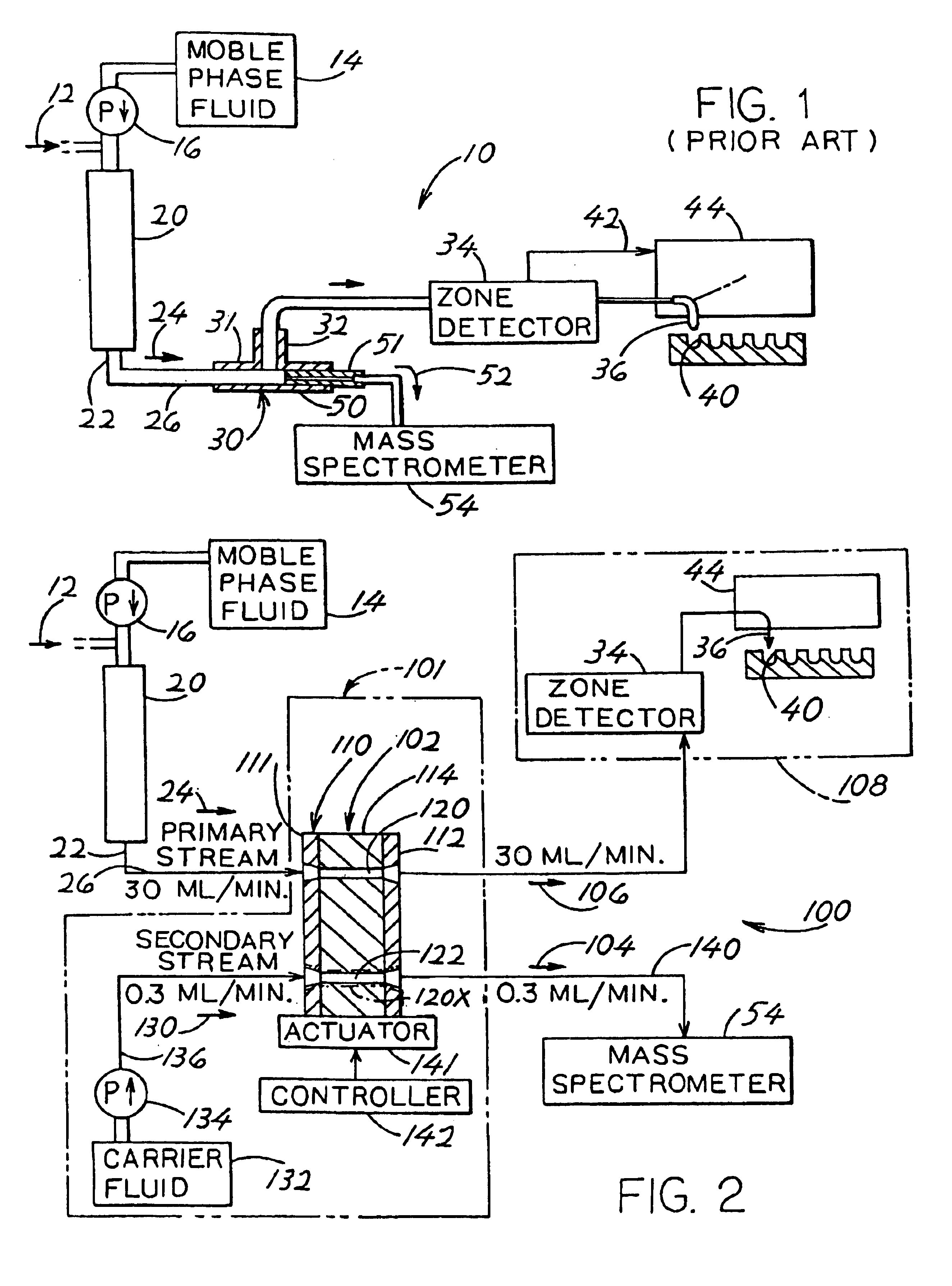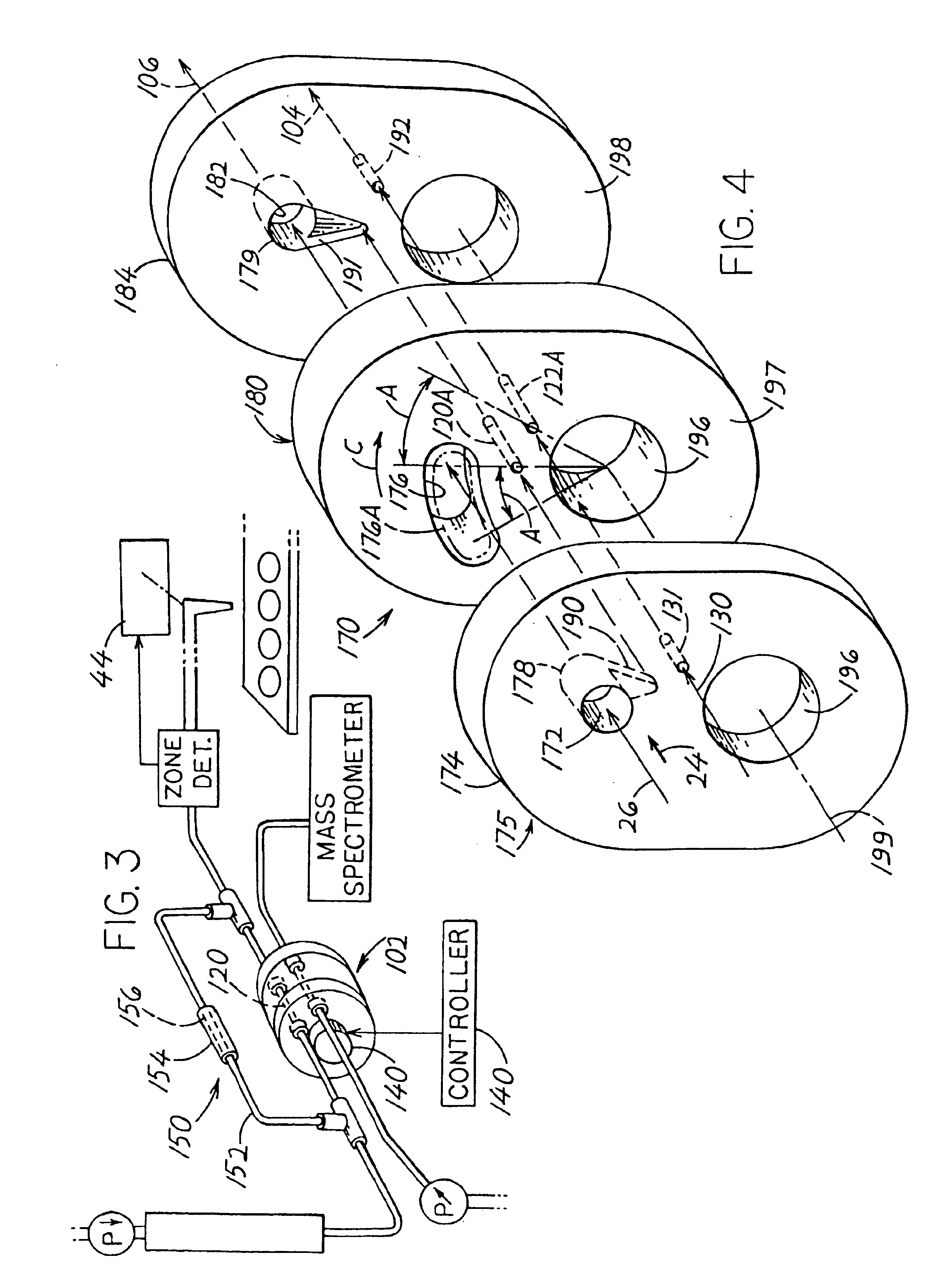Mass rate attenuator
a mass spectrometer and attenuator technology, applied in the field of mass spectrometer, can solve the problems of momentary signal loss, mass spectrometer cannot tolerate a large analyte mass rate, etc., and achieve the effect of quick filling and quick filling of the aliquot passag
- Summary
- Abstract
- Description
- Claims
- Application Information
AI Technical Summary
Benefits of technology
Problems solved by technology
Method used
Image
Examples
Embodiment Construction
[0021]FIG. 1 shows a prior art separating and analyzing system 10 in which a sample 12 with components to be separated, is injected into a stream of mobile phase fluid emanating from a source 14 and pump 16 and flowed into a preparatory chromatographic column 20. The fluid passing through the column is separated by the column into compounds, or components, of different molecular weights. The output 22 of the column is a primary stream 24 that passes along a tube 26 into a first leg 31 of a Tee connector 30. A second leg 32 of the connector carries almost all of the fluid passing along the primary stream, to a zone detector 34. The zone detector 34, which may be an ultraviolet detector, detects when zones containing different compounds pass through it. The flow through the zone detector passes through a nozzle 36 which deposits the sample into a selected one of many containers 40. Whenever the zone detector detects a new compound, it delivers a signal along line 42 to a positioner 44...
PUM
| Property | Measurement | Unit |
|---|---|---|
| flow rate | aaaaa | aaaaa |
| flow rate | aaaaa | aaaaa |
| volume | aaaaa | aaaaa |
Abstract
Description
Claims
Application Information
 Login to View More
Login to View More - R&D
- Intellectual Property
- Life Sciences
- Materials
- Tech Scout
- Unparalleled Data Quality
- Higher Quality Content
- 60% Fewer Hallucinations
Browse by: Latest US Patents, China's latest patents, Technical Efficacy Thesaurus, Application Domain, Technology Topic, Popular Technical Reports.
© 2025 PatSnap. All rights reserved.Legal|Privacy policy|Modern Slavery Act Transparency Statement|Sitemap|About US| Contact US: help@patsnap.com



